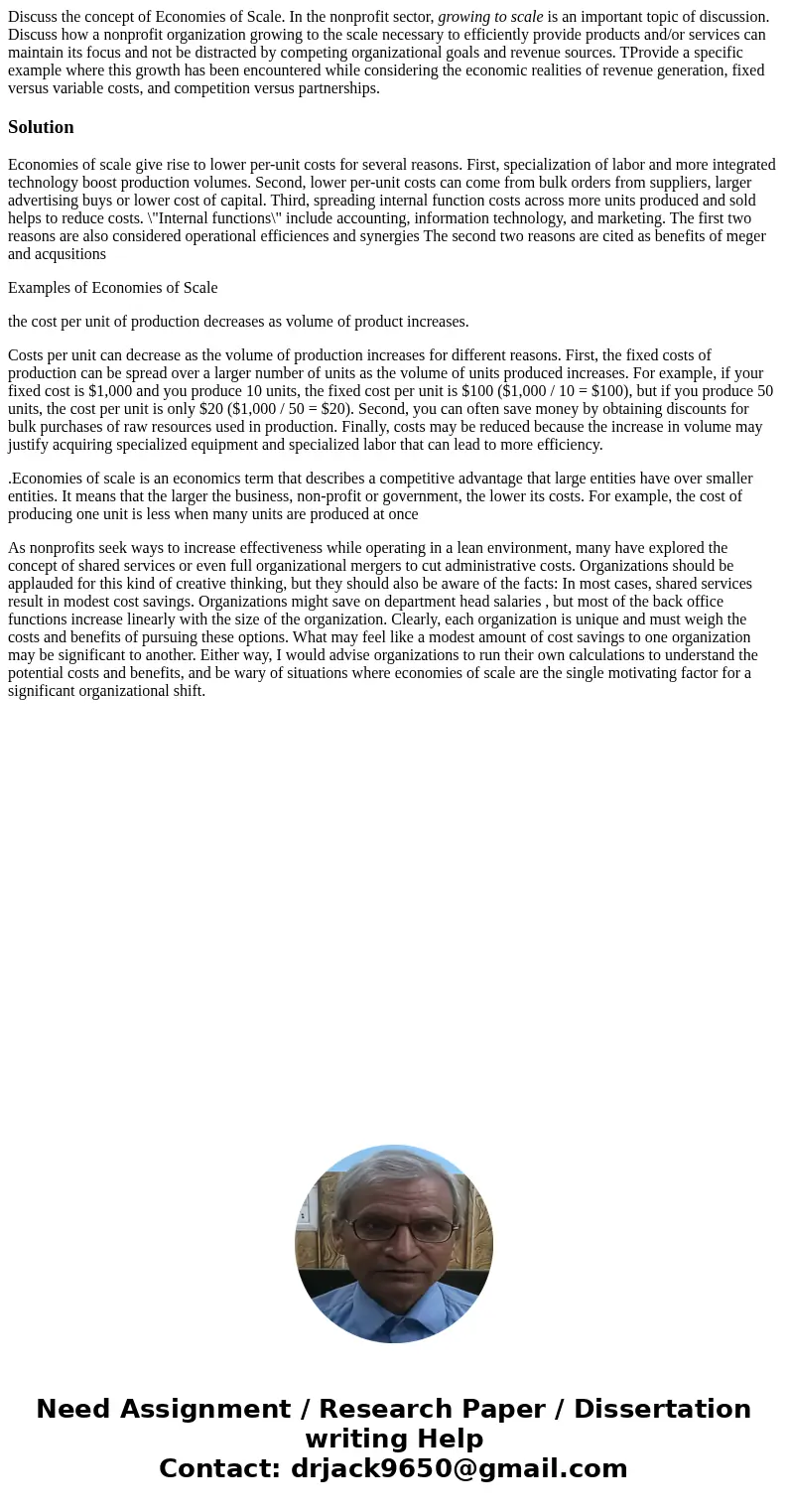Discuss the concept of Economies of Scale In the nonprofit s
Discuss the concept of Economies of Scale. In the nonprofit sector, growing to scale is an important topic of discussion. Discuss how a nonprofit organization growing to the scale necessary to efficiently provide products and/or services can maintain its focus and not be distracted by competing organizational goals and revenue sources. TProvide a specific example where this growth has been encountered while considering the economic realities of revenue generation, fixed versus variable costs, and competition versus partnerships.
Solution
Economies of scale give rise to lower per-unit costs for several reasons. First, specialization of labor and more integrated technology boost production volumes. Second, lower per-unit costs can come from bulk orders from suppliers, larger advertising buys or lower cost of capital. Third, spreading internal function costs across more units produced and sold helps to reduce costs. \"Internal functions\" include accounting, information technology, and marketing. The first two reasons are also considered operational efficiences and synergies The second two reasons are cited as benefits of meger and acqusitions
Examples of Economies of Scale
the cost per unit of production decreases as volume of product increases.
Costs per unit can decrease as the volume of production increases for different reasons. First, the fixed costs of production can be spread over a larger number of units as the volume of units produced increases. For example, if your fixed cost is $1,000 and you produce 10 units, the fixed cost per unit is $100 ($1,000 / 10 = $100), but if you produce 50 units, the cost per unit is only $20 ($1,000 / 50 = $20). Second, you can often save money by obtaining discounts for bulk purchases of raw resources used in production. Finally, costs may be reduced because the increase in volume may justify acquiring specialized equipment and specialized labor that can lead to more efficiency.
.Economies of scale is an economics term that describes a competitive advantage that large entities have over smaller entities. It means that the larger the business, non-profit or government, the lower its costs. For example, the cost of producing one unit is less when many units are produced at once
As nonprofits seek ways to increase effectiveness while operating in a lean environment, many have explored the concept of shared services or even full organizational mergers to cut administrative costs. Organizations should be applauded for this kind of creative thinking, but they should also be aware of the facts: In most cases, shared services result in modest cost savings. Organizations might save on department head salaries , but most of the back office functions increase linearly with the size of the organization. Clearly, each organization is unique and must weigh the costs and benefits of pursuing these options. What may feel like a modest amount of cost savings to one organization may be significant to another. Either way, I would advise organizations to run their own calculations to understand the potential costs and benefits, and be wary of situations where economies of scale are the single motivating factor for a significant organizational shift.

 Homework Sourse
Homework Sourse